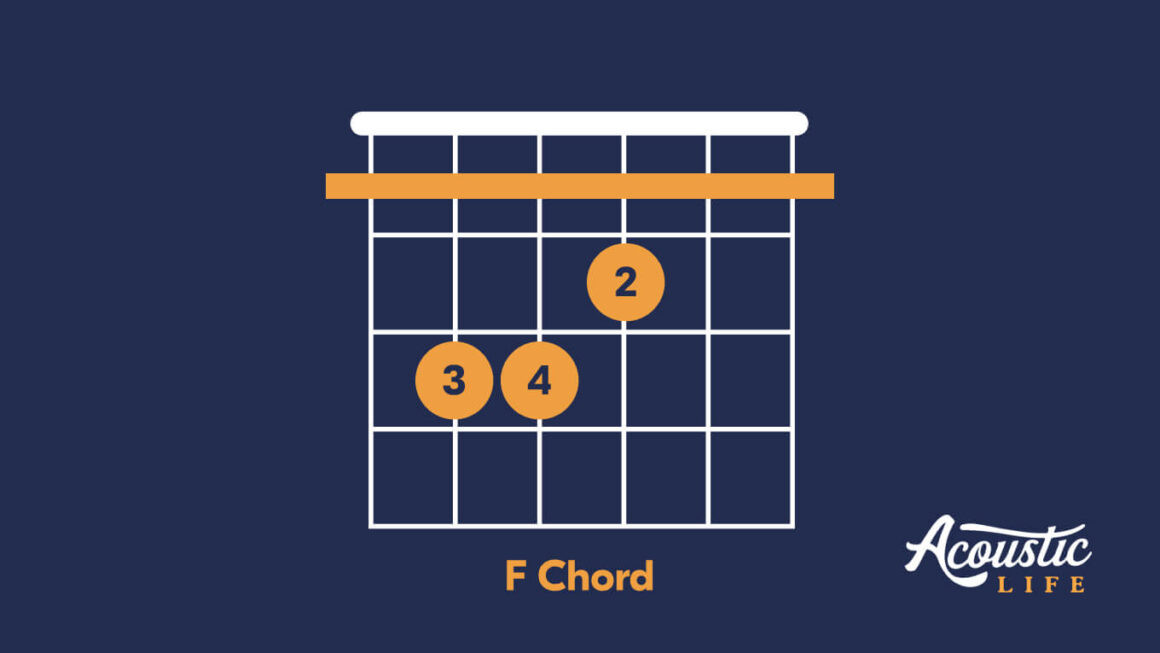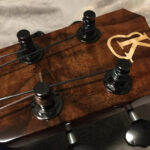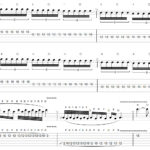Rhythm guitar often plays second fiddle to the flashier lead guitar, but it’s the unsung hero that truly drives a song. While lead guitar might grab the spotlight with solos, rhythm guitar lays down the groove, the heartbeat, that makes music move and feel alive. Understanding and mastering Rhythm In Guitar is absolutely fundamental, whether you dream of fronting a band, jamming with friends, or simply enjoying playing your favorite songs at home. This guide will walk you through the essentials of rhythm guitar, providing you with the tools and techniques to become a confident and capable rhythm player.
What is Rhythm Guitar and Why Does It Matter?
Rhythm guitar is more than just strumming chords in the background; it’s the art of using chords, notes, and various guitar techniques to create a consistent and engaging rhythmic foundation for music. It’s the backbone of countless songs across genres, providing the pulse and harmonic support upon which melodies and solos are built. Imagine a song without a steady rhythmic element – it would likely feel disjointed and lack drive.
The importance of rhythm guitar becomes clear in various musical contexts:
- Solo Performance: Even when playing alone, strong rhythm guitar skills allow you to create a full and engaging sound, keeping time and providing harmonic texture simultaneously.
- Band Setting: In a band, the rhythm guitar locks in with the drums and bass, creating a cohesive rhythmic section that supports the melody and lead instruments. It provides the harmonic landscape for other instruments to explore.
- Jamming and Songwriting: Solid rhythm guitar skills are essential for jamming with others and developing song ideas. A good rhythm part can inspire melodies and form the basis of a song’s structure.
Think about some iconic guitarists known for their rhythm playing. While Kurt Cobain is a fantastic example, seamlessly blending lead and rhythm, consider also artists like Malcolm Young of AC/DC, whose powerful and unwavering rhythm guitar defined their signature sound, or Nile Rodgers, whose funky and intricate rhythm guitar work is legendary in disco and pop music. These players demonstrate the diverse and vital role rhythm guitar plays across different styles.
Understanding Basic Guitar Rhythms
To dive into rhythm guitar, we first need to grasp some fundamental rhythmic concepts. Music is organized in time, and rhythm is how we structure and perceive that time.
At its core, rhythm is built upon beats. Think of beats as the regular pulses you tap your foot to when listening to music. These beats are grouped into measures or bars. A common time signature, especially for beginners, is 4/4 time. In 4/4 time, there are four beats per measure. You can count this as “1, 2, 3, 4”.
Guitar rhythm primarily involves strumming, which is the act of brushing across the guitar strings to produce sound. Strumming can be performed in two primary directions:
- Downstrokes: Strumming downwards, from the higher strings towards the lower strings.
- Upstrokes: Strumming upwards, from the lower strings towards the higher strings.
Combining downstrokes and upstrokes in different sequences creates rhythm patterns. These patterns are the recipes for rhythm guitar, dictating when and in which direction to strum to create different grooves and feels. We’re about to explore a very useful rhythm pattern.
Learning a Fundamental Rhythm Pattern
Let’s learn a versatile and widely used rhythm pattern. This pattern is syncopated, meaning it emphasizes the off-beats, giving it a catchy and dynamic feel. The pattern is as follows, using “D” for downstroke and “U” for upstroke:
Down, Down, Up, Down, Up, Down, Down, Up, Down, Up
To understand the timing, we can count it in relation to a 4/4 measure. Instead of just counting “1, 2, 3, 4”, we’ll use “1 and 2 and 3 and 4 and”, where the “and” represents the off-beats, the subdivisions between the main beats. In this pattern, strums fall on these counts:
1, 2, and of 2, 4, and of 4.
Visually, this pattern looks like this:
Alt text: Guitar rhythm pattern diagram showing downstrokes on beats 1, 2, and 4, and upstrokes on the ‘and’ of beat 2 and the ‘and’ of beat 4 in a 4/4 time signature.
Syncopation occurs because the rhythm emphasizes the “and” counts, creating a rhythm that doesn’t fall squarely on the main beats. This creates a more interesting and less predictable groove. Practice this pattern slowly at first, focusing on the down and upstrokes and their placement within the count. You can practice it on muted strings or with a single chord to get comfortable with the hand movements.
Applying the Rhythm to Guitar Chords
Now, let’s apply this rhythm pattern to some common guitar chords. We’ll use the chords C, F, and G major. A helpful technique to add variation and a bass element to your rhythm playing is to start each chord with a single bass note before going into the full strumming pattern.
Let’s break it down for each chord:
C Chord
Start by playing the root note of the C chord as a bass note. For the C chord, the root note can be found on the A string (5th string), 3rd fret (or open A string in some contexts, but for this pattern, A string 3rd fret is implied with C major chord). Pluck this string with a downstroke. This accounts for the first “Down” in our pattern, landing on beat “1”.
Then, follow with the full strumming pattern across all strings of the C chord:
- Down (Bass Note – A string) – Beat 1
- Down (Full C Chord) – Beat 2
- Up (Full C Chord) – “and” of beat 2
- Down (Full C Chord) – Beat 4
- Up (Full C Chord) – “and” of beat 4
Repeat this sequence with the C chord, focusing on smooth transitions between the bass note and the full chord strums.
Alt text: Diagram showing the C major chord finger positions on a guitar fretboard, with fingers 1, 2, and 3 on the 2nd, 4th, and 5th strings respectively at the 1st, 2nd, and 3rd frets.
F Chord
For the F chord, the root note is typically found on the D string (4th string), 3rd fret. Start with a downstroke on the D string as your bass note. Then apply the same strumming pattern:
- Down (Bass Note – D string) – Beat 1
- Down (Full F Chord) – Beat 2
- Up (Full F Chord) – “and” of beat 2
- Down (Full F Chord) – Beat 4
- Up (Full F Chord) – “and” of beat 4
Practice the F chord pattern, ensuring clean chord changes and consistent rhythm.
 f chord
f chord
Alt text: Illustration of the F major chord on a guitar, indicating finger placements for the barre chord version with the index finger barring across the 1st and 2nd strings at the first fret, and additional fingers on the 3rd, 4th, and 5th strings.
G Chord
For the G chord, the root note is on the low E string (6th string), 3rd fret (or open low E string, but 3rd fret is implied in this context). Use this as your bass note with a downstroke, and then apply the rhythm pattern:
- Down (Bass Note – Low E string) – Beat 1
- Down (Full G Chord) – Beat 2
- Up (Full G Chord) – “and” of beat 2
- Down (Full G Chord) – Beat 4
- Up (Full G Chord) – “and” of beat 4
Practice the G chord rhythm pattern. Once you are comfortable with each chord individually, try transitioning between C, F, and G chords using this rhythm. Smooth chord transitions are key to fluent rhythm guitar playing.
 G Major
G Major
Alt text: Guitar chord diagram for G major, showing finger positions with fingers on the 5th and 6th strings at the 2nd and 3rd frets, and the 1st string at the 3rd fret.
Essential Tips for Mastering Rhythm Guitar
To truly nail rhythm guitar, here are some crucial tips to keep in mind as you practice:
- Count the Rhythm Out Loud: One of the most effective ways to internalize rhythm is to count out loud as you play. Use the “1 and 2 and 3 and 4 and” counting method. This helps you feel the placement of each strum within the beat and develop your internal sense of timing.
- Divide the Beat Mentally: As you become more comfortable, start to feel the “and” counts as equally important subdivisions of the beat. Mentally dividing the beat into smaller units allows for more complex and nuanced rhythmic playing.
- Visualize the Strumming Pattern: Imagine the up and down motion of your strumming hand as you listen to music. Visualize the pattern in your mind, connecting the sound with the physical movement. Watching experienced rhythm guitarists play can also be incredibly helpful. Observe their strumming hand and body movements to get a better sense of their rhythmic feel.
- Practice Slowly and Gradually Increase Speed: Start practicing any new rhythm pattern or song at a slow tempo. Focus on accuracy and evenness of rhythm. Use a metronome to maintain a consistent tempo. Once you can play it cleanly at a slow speed, gradually increase the tempo. Patience is key – slow and steady practice leads to long-term progress.
- Start with Simple Chord Progressions: Begin practicing rhythm guitar with simple and common chord progressions like C-G-Am-F or G-D-Em-C. These progressions are found in countless songs and provide a great foundation for practicing rhythm in a musical context.
- Listen Actively to Rhythm in Music: Pay close attention to the rhythm guitar parts in songs you enjoy. Try to identify the strumming patterns, the accents, and how the rhythm guitar interacts with other instruments. Try to tap along to the rhythm and feel the groove.
Taking Your Rhythm Guitar Skills Further
Mastering rhythm guitar is an ongoing journey. As you become more comfortable with basic rhythms, there’s a vast world of rhythmic possibilities to explore. Continue to practice consistently, experiment with different strumming patterns, and listen actively to a wide range of music to expand your rhythmic vocabulary.
Consider exploring different genres and rhythm styles. From the driving rhythms of rock and blues to the intricate patterns of funk and Latin music, each genre offers unique rhythmic challenges and rewards. Learning different styles will make you a more versatile and creative rhythm guitarist.
To further enhance your guitar skills and develop a consistent practice routine, resources like Tony’s Acoustic Challenge can be invaluable. They offer structured lessons and guidance to help you progress steadily on your guitar journey. Consistent practice and a focus on rhythm will unlock a deeper level of musicality and enjoyment in your guitar playing.
Watch this FREE guitar class for three secrets to learning guitar faster in just 10 minutes a day.


